Archibald Leitch: The man who built Britain's football grounds
- Published
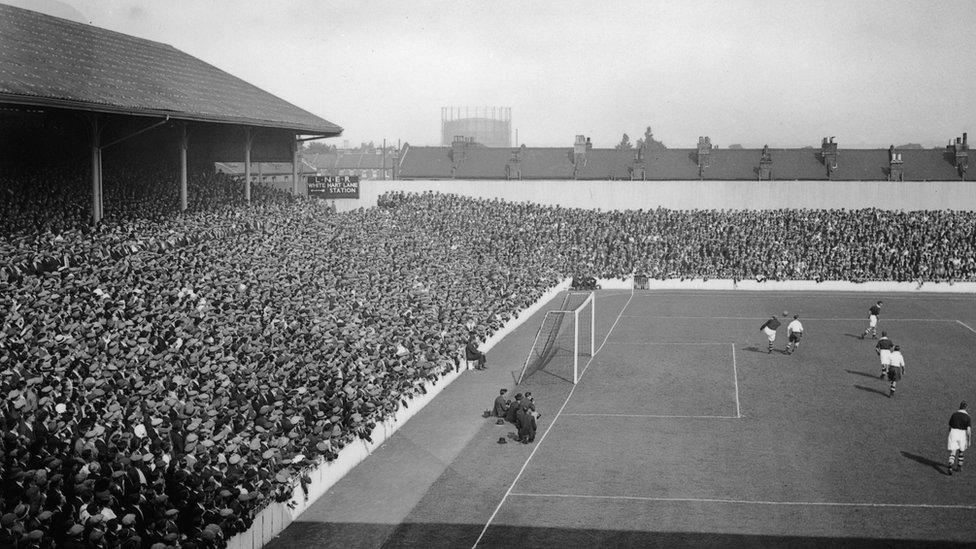
Tottenham's White Hart Lane was a stadium Archibald Leitch returned to design stands for over three decades
When Archibald Leitch died 80 years ago few in football knew his name but his impact on those who watched the game was huge.
Between 1899 and his death on 25 April 1939, the Scottish architect built stands for Rangers, Chelsea, Fulham, Spurs, Liverpool, Everton, Manchester United, Arsenal, Aston Villa and many more.
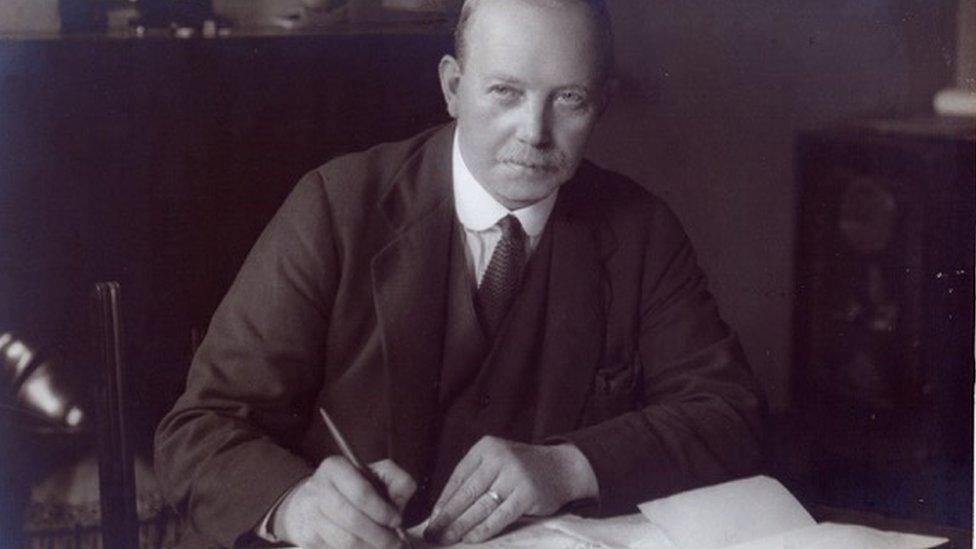
Archibald Leitch survived disaster to build many football grounds
In fact, at his peak in the late 1920s, 16 out of the 22 clubs in the English First Division had hired Leitch's company at one time or another.
He also designed a greyhound and speedway stadium in London, where in the early 1930s there was a doomed attempt to establish a Football League club called Thames AFC.
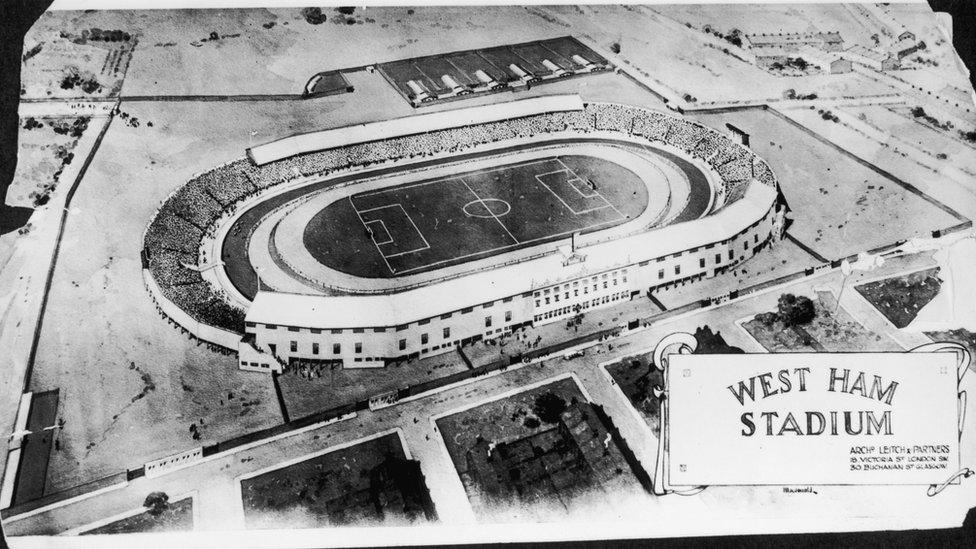
The West Ham stadium designed by Leitch is not to be confused with the ground used by West Ham United
According to historian Simon Inglis, no other firm of architects before or since has clocked up such a client base in British sport.
Mr Inglis, the author of Engineering Archie: Archibald Leitch - Football Ground Designer, external, says Leitch's career almost ended in disaster as soon as it began but he fought back to dominate British football stadium design for decades.
In more recent times, the Leitch-designed stands have quickly disappeared as new modern stadiums have been built but his influence can still be seen across England and Scotland.
How did it all begin?
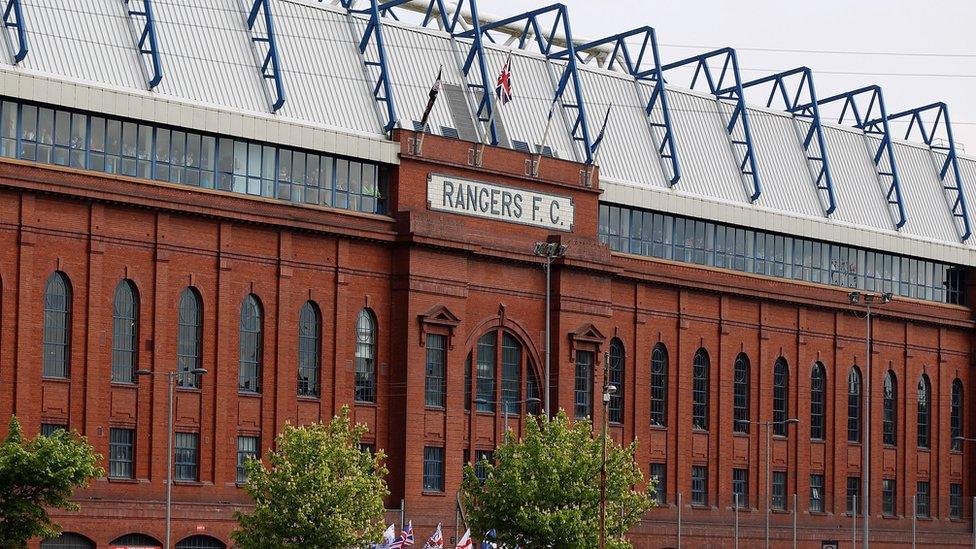
Archibald Leitch's first worked for Rangers in 1899. He returned to build the South Stand in 1928
Leitch was born in Glasgow in 1865 and began his working life as a factory architect.
Mr Inglis says the first ground Leitch worked on was Kilmarnock's in 1899.
That same year he was commissioned to design a new stadium for Rangers, the club he supported.
Rangers had been playing in a "fairly basic" 25,000-capacity timber ground and were keen to expand.
They moved to the other side of Ibrox Park and Leitch built a new oval stadium, which by 1902 had a capacity of 80,000.
Ibrox stadium tragedy
But on the very first occasion the ground was tested by a capacity crowd, disaster struck.
Scotland were playing a match against England in April 1902 when a short section of timber terracing behind one of the goals gave way, sending 25 fans to their deaths.
Leitch was at the game and witnessed the tragic events.
An inquiry was held into the deaths and, according to Mr Inglis, the blame fell on the inferior wood which had been used on the terracing.
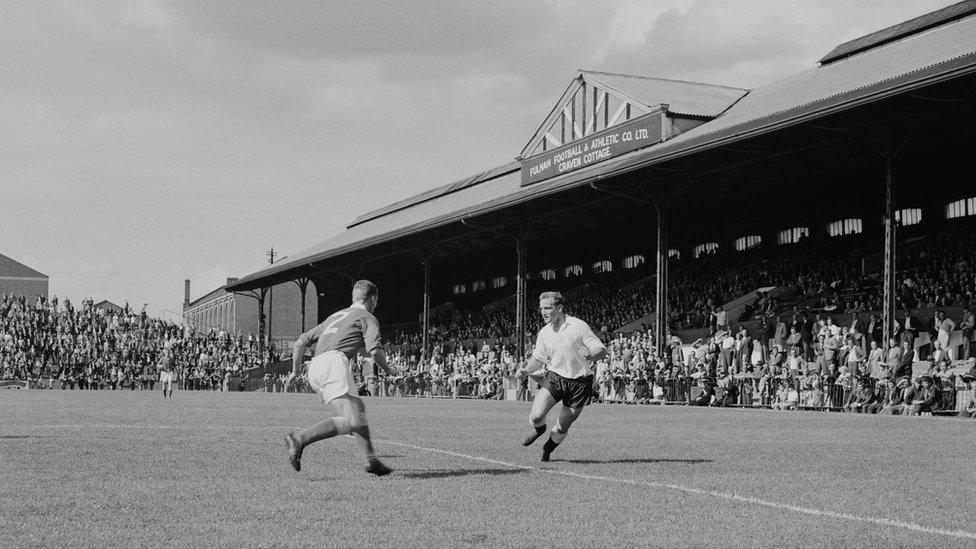
Fulham's Craven Cottage was designed by Leitch in 1905
The Ibrox terrace was built in a way which was common at the time, with wooden flooring on top of an iron frame.
"Today we would call them bleachers," Mr Inglis says. "They were very popular in American baseball stadiums."
It transpired that yellow pine was used at Ibrox instead of the superior red pine and this was blamed for the disaster.
Timber merchant Alexander MacDougall was the man who carried the can despite the presiding judge feeling he was perhaps a scapegoat.
Mr Inglis says: "There was evidence that Leitch had approved the use of yellow pine in order to get the job done but MacDougall was equally to blame because apparently he billed Rangers for the higher quality pine."
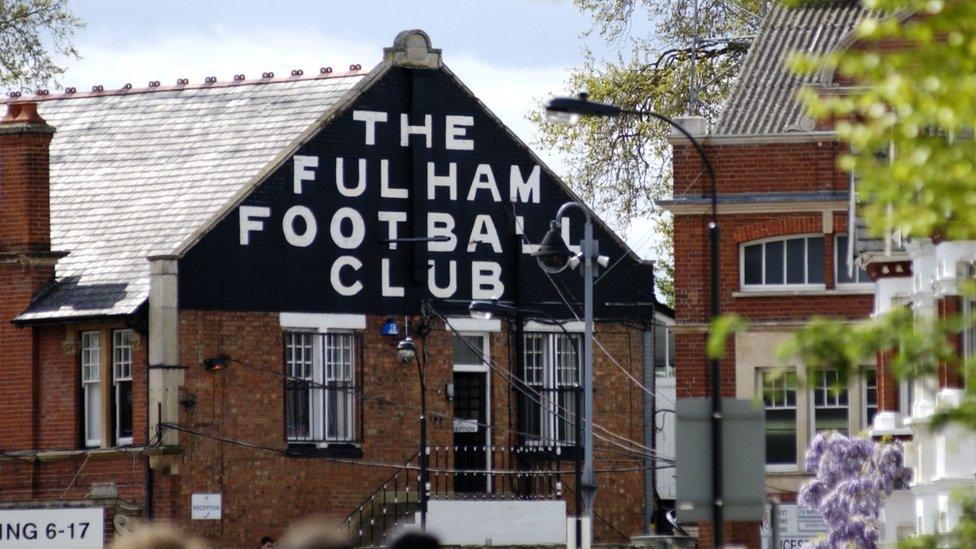
Craven Cottage underwent a major redevelopment in 2002
Despite Leitch escaping criminal prosecution, he was still in danger of losing his career.
Mr Inglis says the architect wrote a letter to Rangers begging them to re-employ him instead of one of his rivals.
He says: "Leitch writes to Rangers and basically says 'if you sack me then you will effectively be saying that I am guilty'."
Leitch's letter goes on: "I need hardly say what an unutterable anguish the accident caused me, surely the most unhappy eyewitness of all."
Mr Inglis says Leitch was a charismatic man and a good salesman who was determined to clear his name after the disaster.
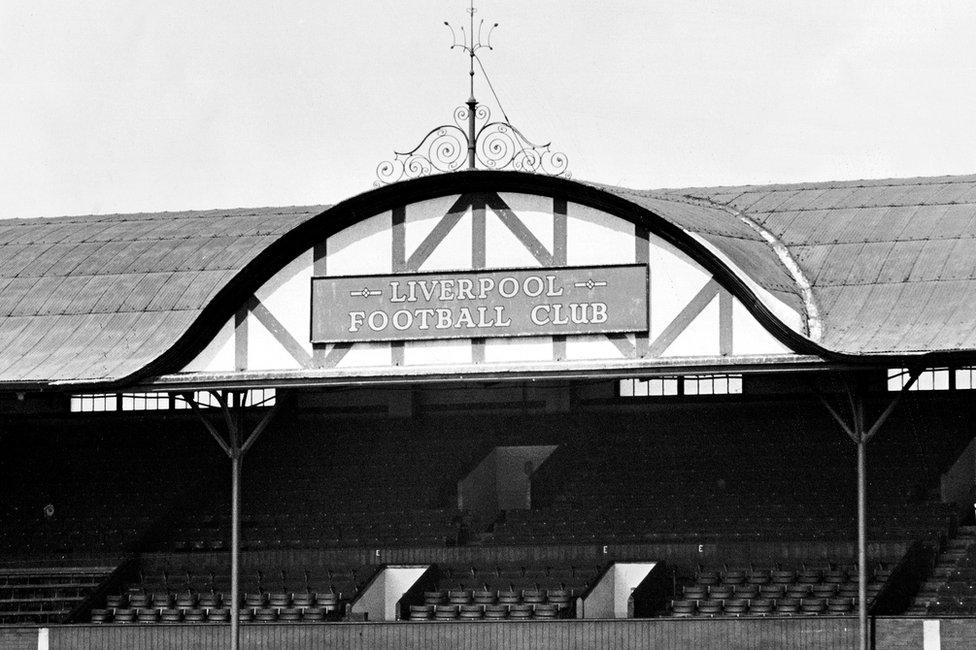
The decorative gable at the centre of the main stand roof at Liverpool's Anfield stadium, designed by Archibald Leitch
Leitch, a prominent Protestant church-goer and freemason, eventually persuaded Rangers to give him another chance.
Mr Inglis says: "Archie to his credit gets the job back with Rangers to replace the terracing and does what every good engineer will do, he goes back to the drawing board."
The result was a patented form of terracing which is formed by solid ground - effectively earth banks - to make them stronger.
He also unveiled tubular steel crush barriers which were built into the slope and form a network of steel and concrete that sat on top of the bank.
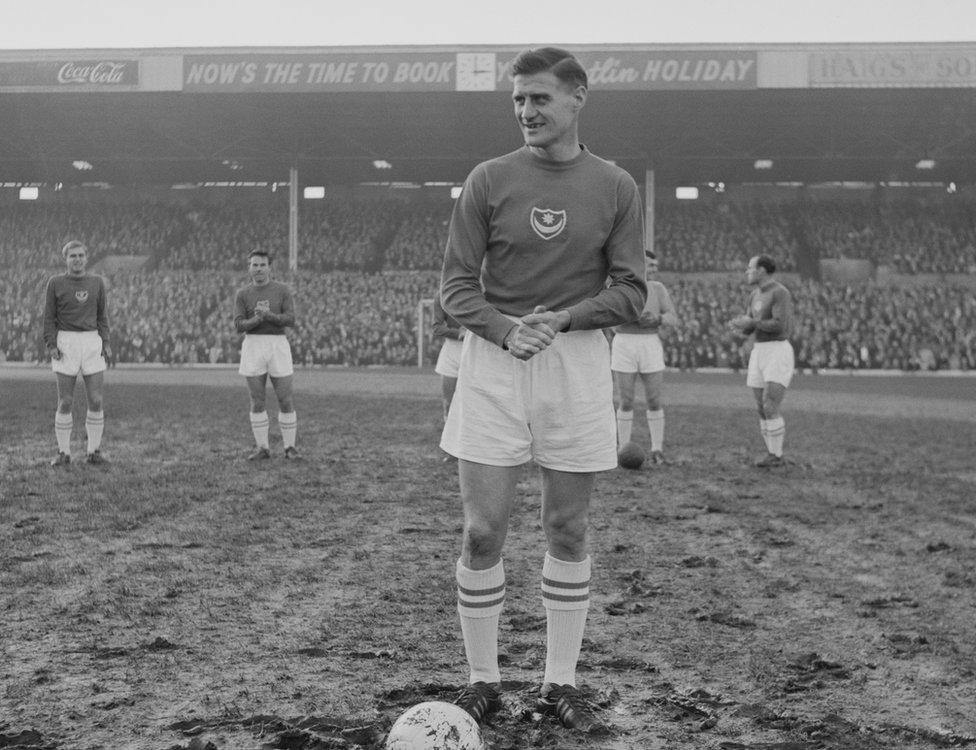
Portsmouth's Fratton Park was another where Leitch made his mark
The first grounds to benefit from this new design were Fulham's Craven Cottage and Chelsea's Stamford Bridge, which were unveiled in 1905.
Leitch's reputation for being able to build functional and budget-conscious football grounds grew.
Mr Inglis says the people who controlled football clubs were "very conservative" and it was hard for Leitch to convince them to take risks with their design, as they were beginning to do in Europe.
But Leitch refined and improved his engineering and design as he moved around England as a "jobbing architect".
In 1923 when Wembley Stadium was built, Leitch was not even considered for the job and was hugely critical of the result.
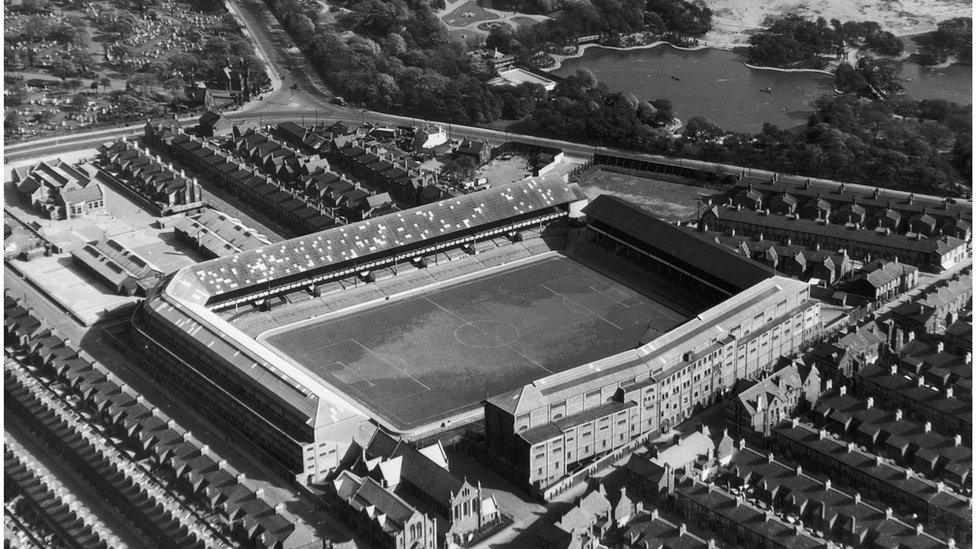
Much of Everton's Goodison Park was designed by Leitch
Mr Inglis says Leitch was not part of "the establishment" and those in charge of football would not have even looked at his designs before awarding the contract to architects who had no experience of building stadiums.
Despite being largely overlooked, Leitch's designs dominated British football until the late 1980s when the Taylor Report following the Hillsborough disaster accelerated the replacement of many of his stands.
His work can still be seen at a number of grounds including Rangers, where the South Stand, built in 1928-9, is category B listed.
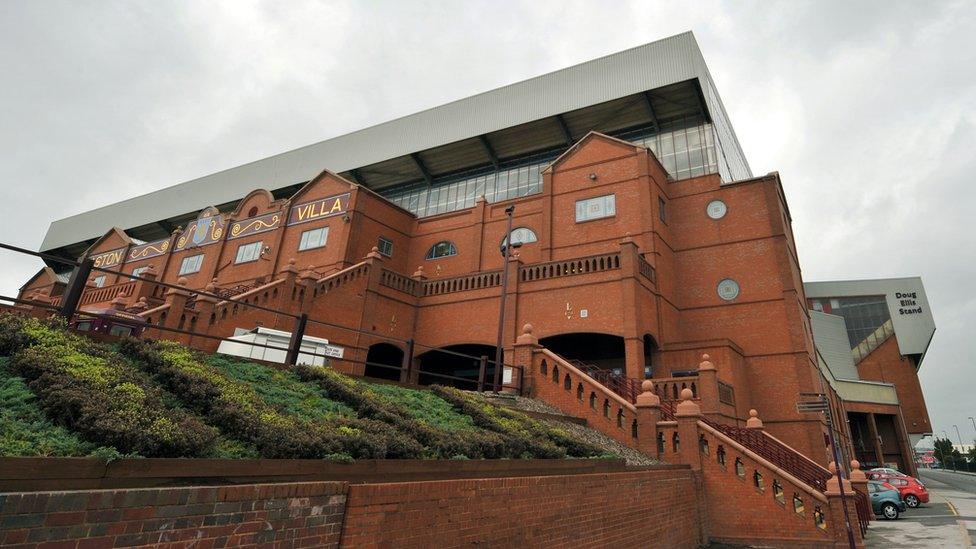
Aston Villa's famous Holte End terrace was originally designed by Leitch's firm
The concrete core of Leitch's main stand at Liverpool's Anfield stadium, built in 1906, lives on but it is buried deep within the vast new stand.
Across Stanley Park, two others Leitch stands survive at Goodison Park: the Bullens Road Stand (1926) and Gwladys Street (1938) but they may not be around for much longer if Everton rebuilds.
Fulham, Sheffield Wednesday, Dundee, Aberdeen, Crystal Palace and Portsmouth all have Leitch work that is still standing.

Everton playing at Spurs' White Hart Lane ground in 1912
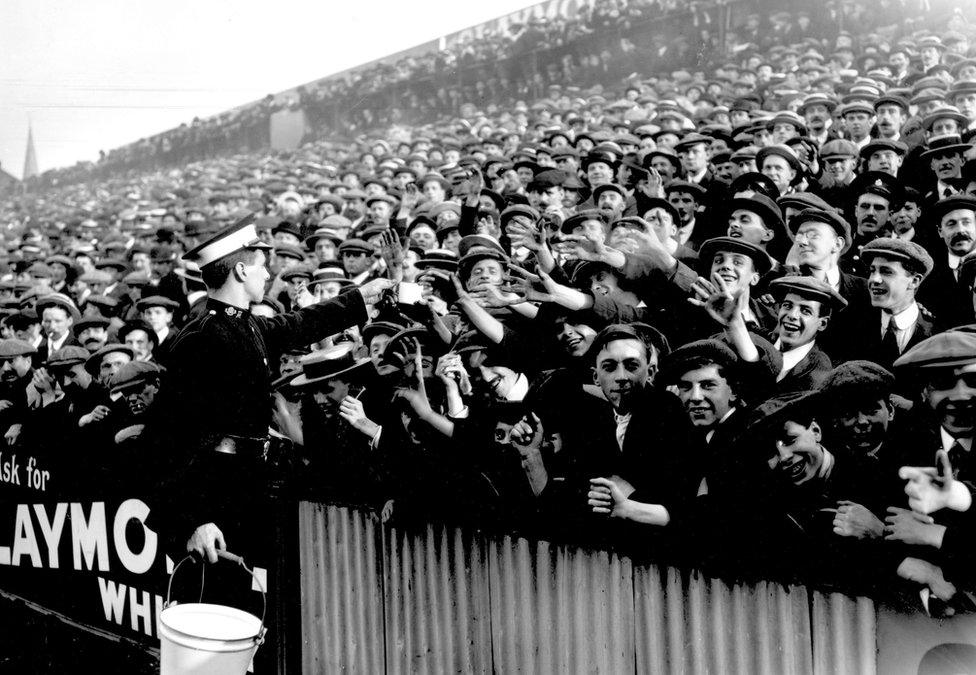
An ambulance worker handing out water at a crowded football match between Tottenham Hotspur and Manchester City at White Hart Lane in 1913
But Tottenham's White Hart Lane is the latest casualty.
Leitch built four stands for Spurs between 1909 and 1934, including the East Stand, but the stadium has now been replaced by a new ground.
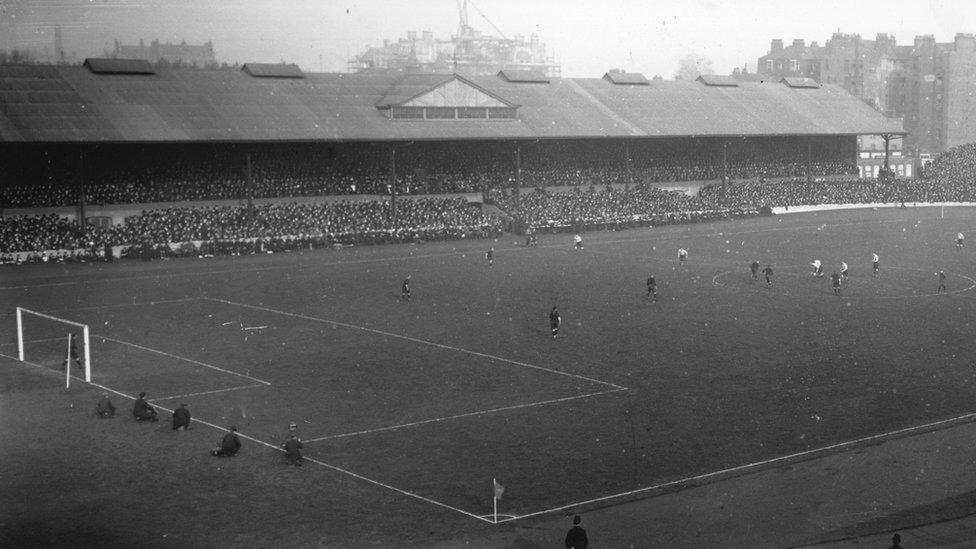
A general view of a match in progress at Chelsea's Stamford Bridge in 1919
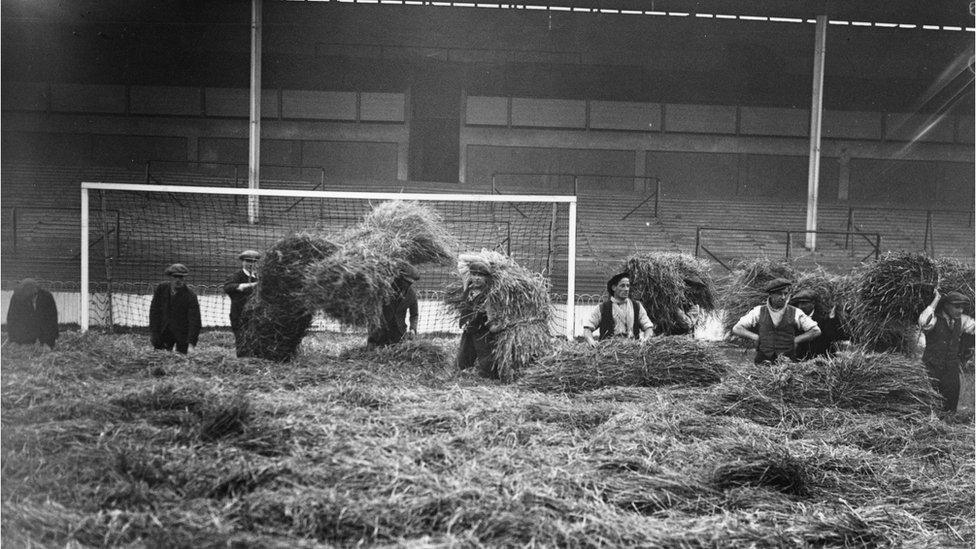
Groundstaff lay 3,000 bales of straw at Tottenham Hotspur's football pitch to protect the ground from frost
When Archibald Leitch died in April 1939, two days short of his 74th birthday, there was not a single obituary in any newspaper.
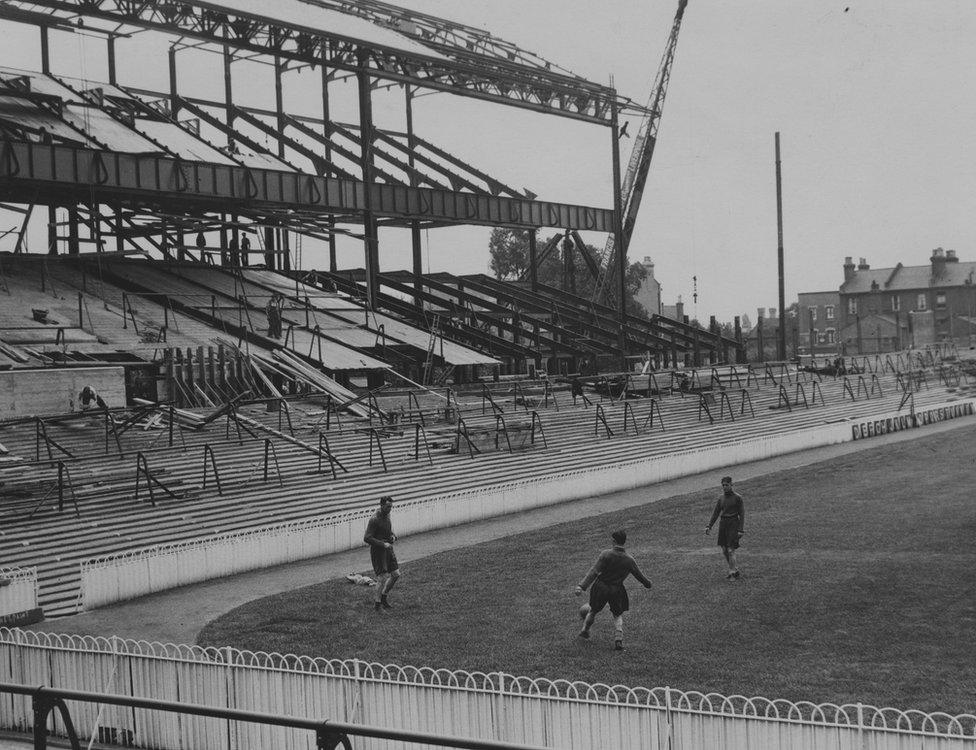
Leitch who had first designed a stand at White Hart Lane in 1909 was brought back for the new East Stand development in 1934
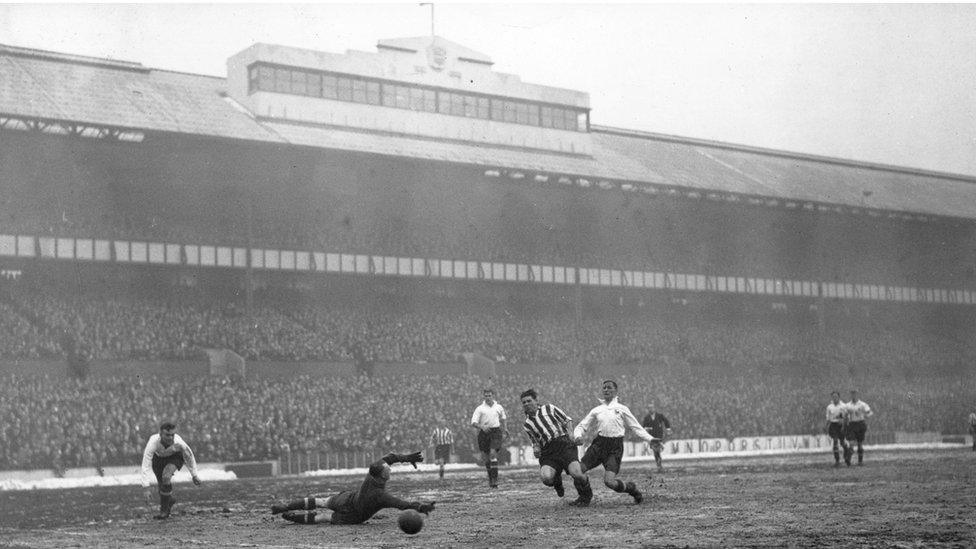
Spurs play Sheffield United at White Hart Lane in 1936
Mr Inglis says: "It is extraordinary that he died almost completely unknown.
"In those days football ground architects were just not regarded as establishment figures. There was just not the level of press coverage that there is today."
Simon Inglis will be giving a talk on Archibald Leitch in Glasgow on 28 May., external